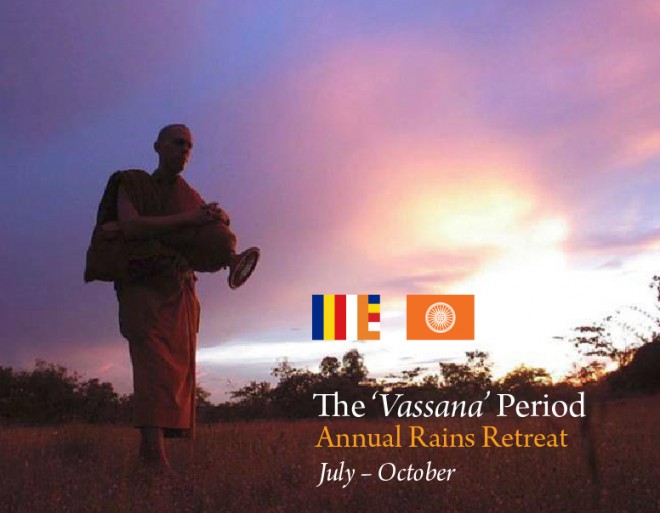Annual Rains Retreat for Monastics
Annual Rains Retreat for Monastics
The tradition of ‘Rains Retreat’ was started by the Buddha Himself in the year 588 BCE, where the Lord and 60 bhikkhus resided in Sarnath near Varanasi. The Buddha, seeing that the period of intense spiritual practice and communal discipline had greatly benefited the monks, formally instituted the 3-month ‘Rains Retreat’ whereby monks and nuns were to refrain from traveling and engaging in much activity to focus their attention inwardly towards spiritual development and purification.
The Buddha also encouraged lay devotees to support the material needs of the monks during this 3-month period so as to free the practitioners to concentrate on spiritual work. The ‘Vassana’ period afforded lay people more opportunities to approach resident monks for Dhamma teachings and spiritual guidance. Thus, the close symbiotic relationship between the monastics and the laity was further cemented.
In the Theravada School of Buddhism, the tradition of observing the ‘Rains Retreat’ persists till today. In fact, the seniority of a Theravada bhikkhu (monk) is reckoned by the number of ‘Rains Retreat’ (‘Vassana’ ) he has observed since his ‘Upasampada ‘ (higher ordination).
The continuation of the Buddha-Sasana very much depends upon the upholding of the Buddha’s teachings (Dhamma) and discipline (Vinaya) by both the monastic and lay communities. As long as there is practice and realization of the Dhamma, the world will never be deprived of the Buddha’s profound wisdom.
Excerpt from the article originally published on-line at Nalanda’s website : http://www.nalanda.org.my/entering-the-vassa-rains-retreat/


